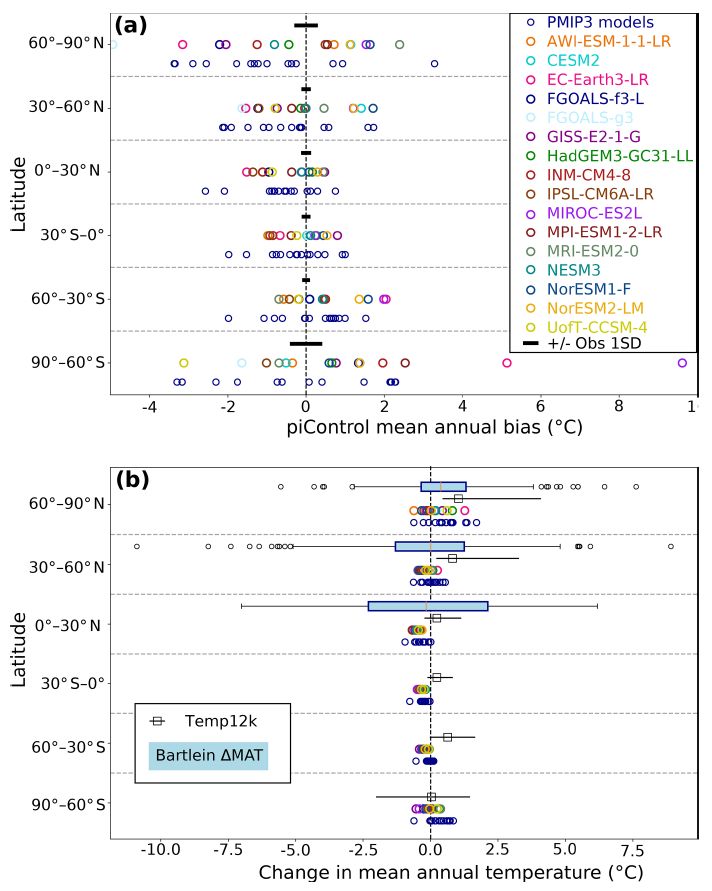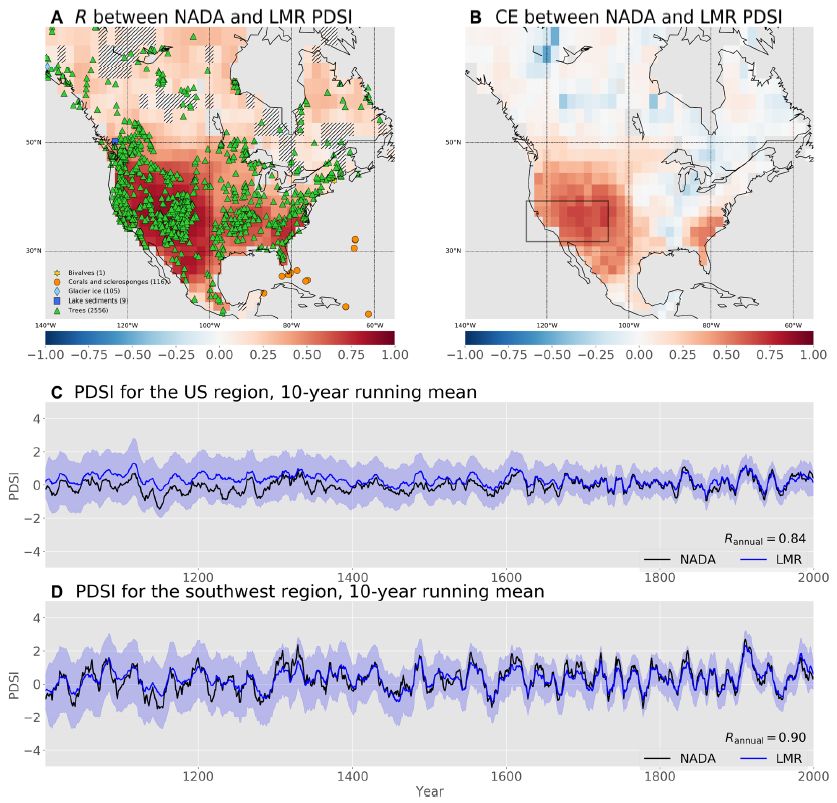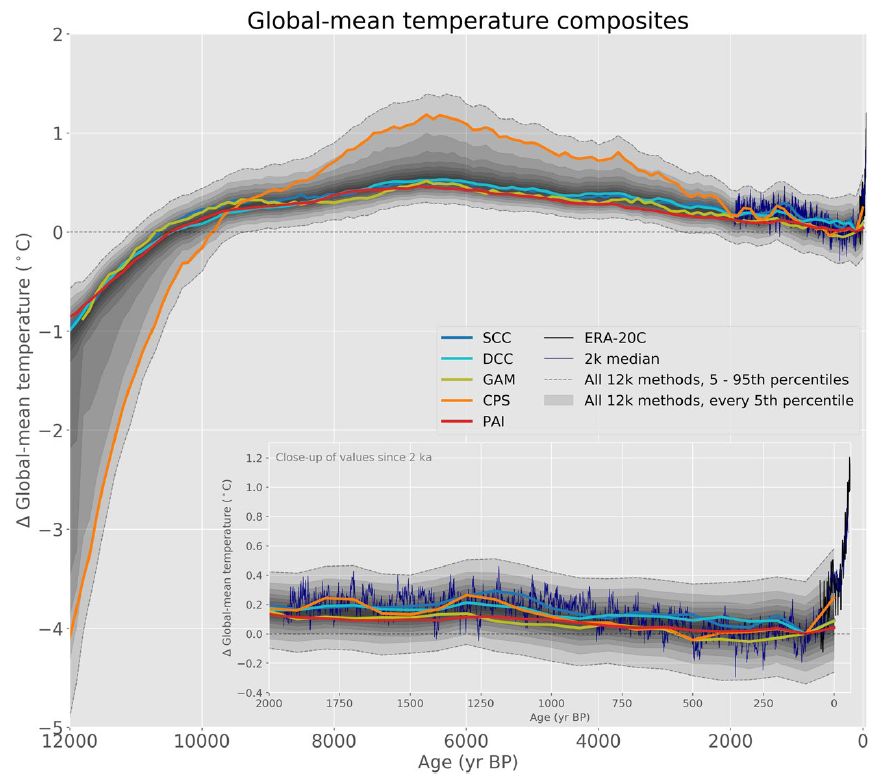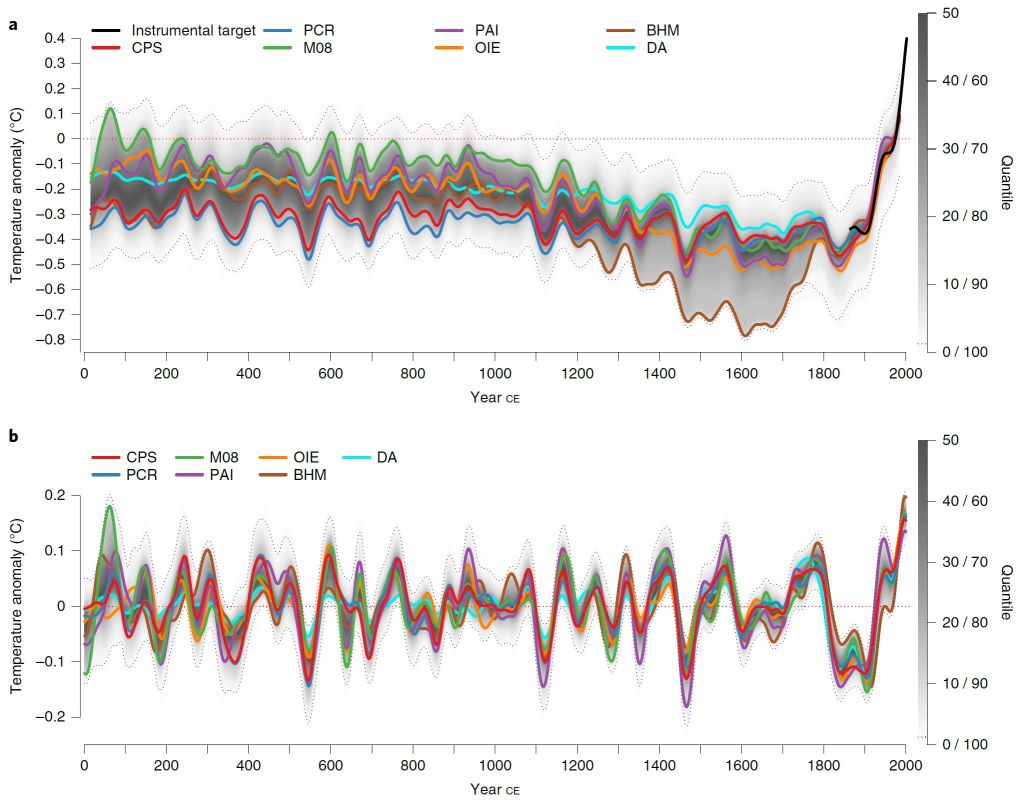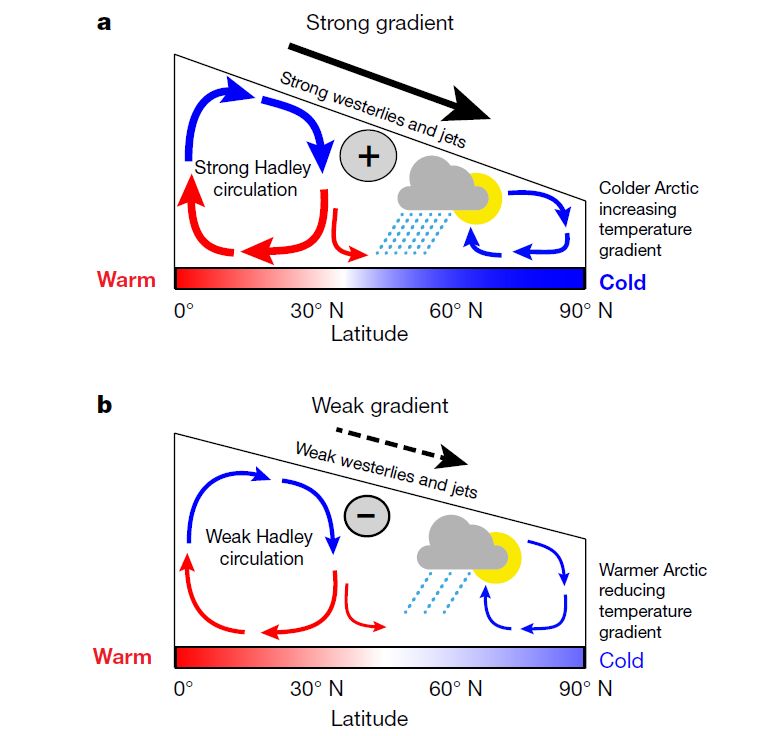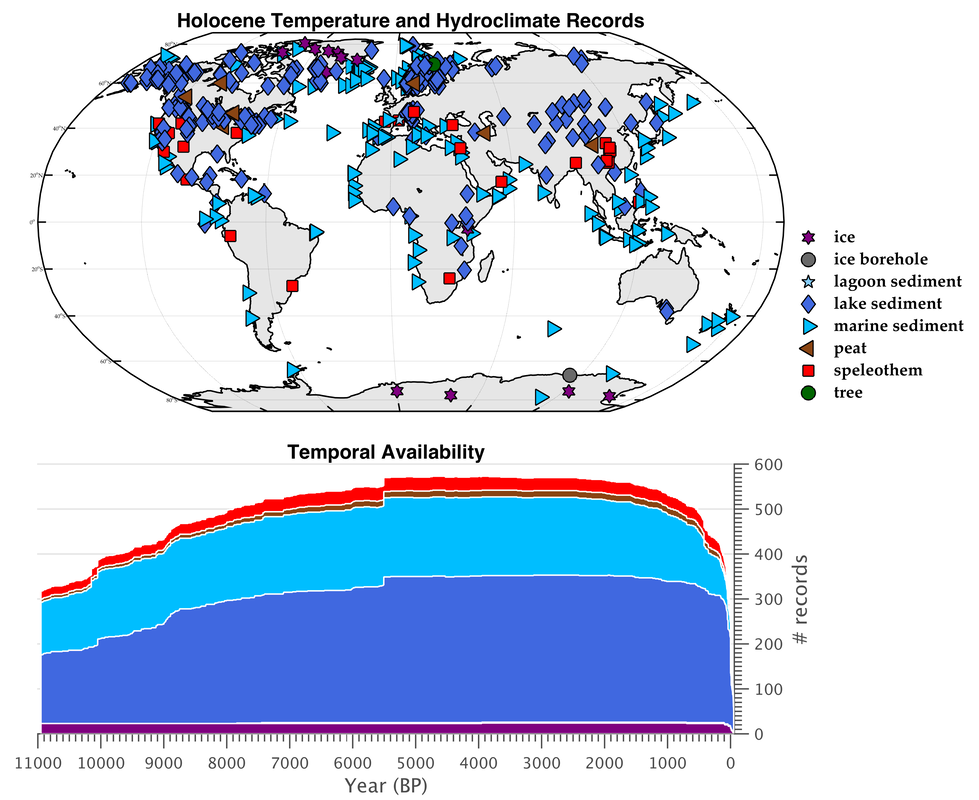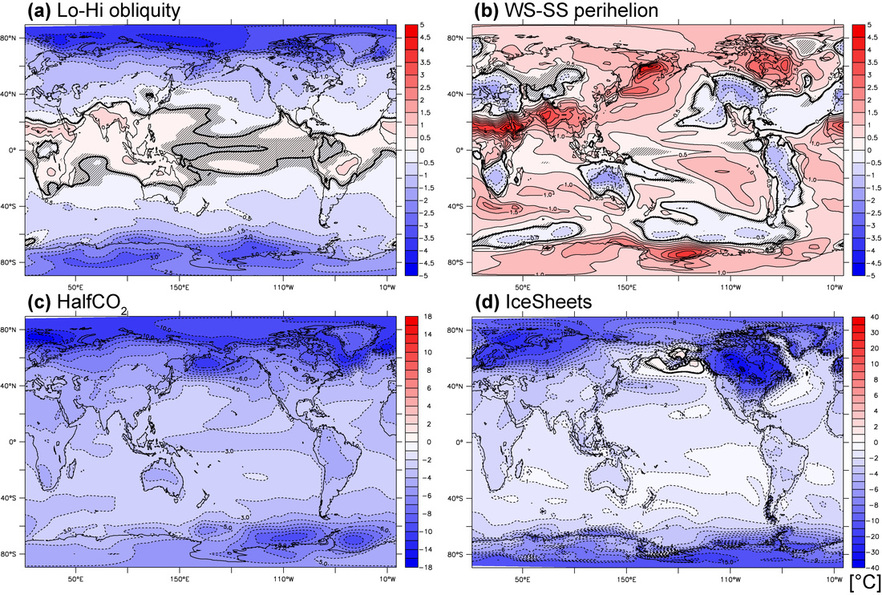Selected Papers
Research
Synthesizing paleoclimate proxies and climate models
The instrumental record—the recent period of extensive climate observations—only extends back to around 1850 C.E. To study Earth's vast climate history before this period, proxy records such as trees, corals, and ice cores are a valuable asset, as are general circulation models (GCMs). Because these two approaches have different strengths, data assimilation is a method of combining point data from proxy records with global teleconnection patterns from model results to more accurately reconstruct past climate within a physically-consistent global framework.
Under a recently funded NSF grant, I will be using this data assimilation methodology to reconstruct climate of the Holocene. This period—the relatively stable period of warmth since the end of the last ice age ~12,000 years ago—is rich with paleoclimate data and interesting scientific questions. This newly constructed Holocene Reconstruction will be a useful resource for climate scientists, and will be the basis for investigating long term temperature trends and hydroclimate shifts over this recent period, which is relevant to climate today. |
Modeling past climate
Earth's climate has undergone dramatic changes over the past several million years, forced by changes in the earth's orbit and accompanied by dramatic changes in continental ice sheets and greenhouse gas changes in the atmosphere. To understand the relationships that determine climate changes on these timescales, I have run idealized climate model simulations to isolate the climate responses to individual factors and evaluate the results against proxy records.
Improved understanding of these forcing-response relationships will help us better identify the role of different forcings in causing past climate change. Because future changes will be driven primarily by CO2 changes, it is imperative to understand the separate influences of different factors in past change. My modeling work has focused on global-scale temperature and precipitation patterns as well as local responses in the equatorial Pacific Ocean, the Maritime Continent, and monsoon regions. |
Data sets and code
To access some of my data sets and code, please visit this page.
